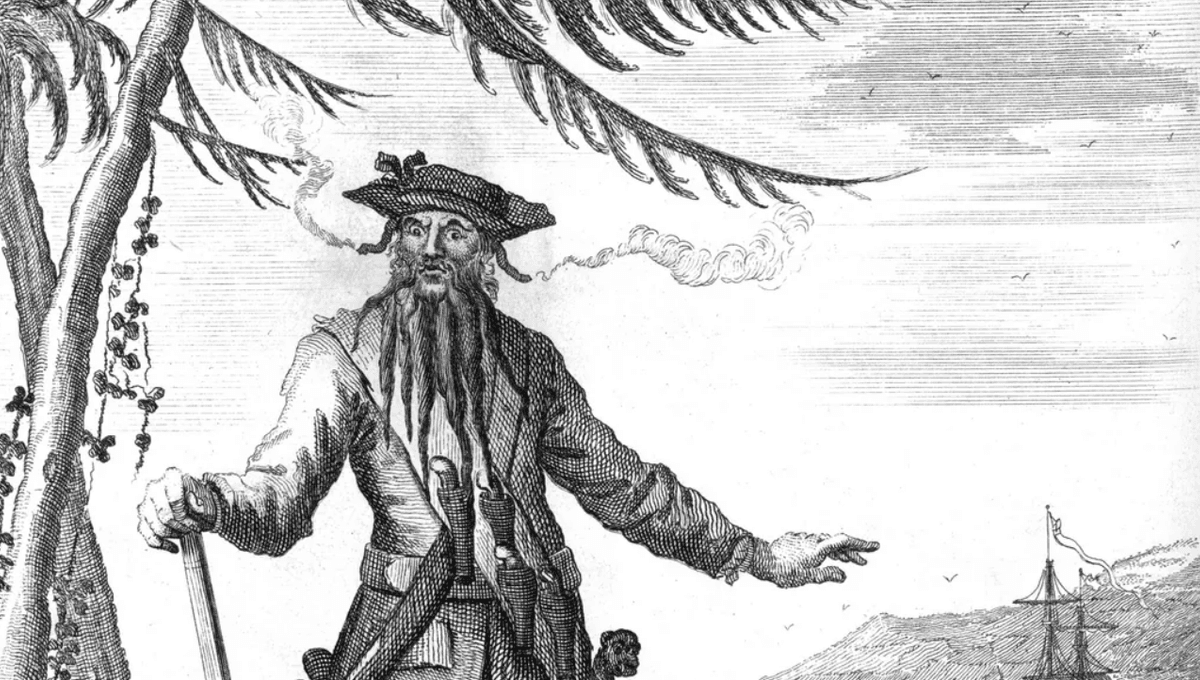
A curious conundrum that’s surrounded the sunken wreck of Blackbeard’s pirate ship has potentially been solved by new research. It’s been a longstanding mystery as to how the ship contained heaps of coal, considering this was before there was any coal mining in America, but scientists may now have an answer.
The tale of Blackbeard’s ship is everything you’d imagine from a legendary pirate story. Launched in the early 18th century, the 31.4-meter (103-foot) long vessel was a French slave-trading ship that sailed the Atlantic.
On November 28, 1717, the ship was captured by Edward Teach (aka Blackbeard) and his gang of pirates near the Caribbean island of Saint Vincent. Amassing a crew of up to 400 pirates, Blackbeard used the ship to raise hell and obtain hoards of treasure around the Caribbean. It also appears in the Pirates of the Caribbean movie franchise, as any good pirate legend should.
Blackbeard renamed the Queen Anne’s Revenge, referencing the monarch who died three years previously. Some have suggested the name was a reference to the so-called Queen Anne’s War, in which Blackbeard had served in the Royal Navy.
It eventually sunk in June 1718 when it ran aground near Beaufort Inlet, North Carolina, and the wreck was rediscovered until 1996.
Among the shipwreck, archaeologists have recovered some of Blackbeard’s treasures, including gold, paper documents, mercury, brass goods, glass beads, and – unexpectedly – hundreds of pieces of coal.
This was decades before coal mining in North America and it wasn’t until the 1870s that steam-powered ships could be propelled by burning fuel, so what was it doing among the wreck?
“In a 19th- or 20th-century setting, the easiest explanation for the source of both types of coal could have been in the Appalachians, but the mining there didn’t exist in the period we’re looking at. Plus, European settlers did not discover Pennsylvania anthracite until maybe the later part of the 1760s and real, legitimate mining didn’t happen until the 1800s,” James Hower, study author and a distinguished fellow and research professor at the University of Kentucky Center for Applied Energy Research, said in a statement.
Scientists have recently analyzed the coal and surveyed the seabed to help solve the mystery. Their work has revealed that the coal dates to much later than Blackbeard’s time. The fact it was sprinkled around the shipwreck was just a matter of chance.
The shipwreck is found off the coast of Fort Macon, which became a key harbor and coal refueling station during the Civil War after Union troops captured it on April 26, 1862. Over the next two years, 421 vessels made nearly 500 trips into the city for coal. It appears that some of the ships may have chucked some of their cargo overboard.
It then gathered on the pirate shipwreck as a result of waves, tidal currents, and hurricanes that have caused the inlets and sand shoals along the Outer Banks to shift over the years.
“It turns out we didn’t need to sort out the source because the happenstance of the shipwreck and the coal was totally a coincidence. It was most likely dumped from US Navy ships in the Civil War era,” explained Hower.
The study is published in the International Journal of Nautical Archaeology.
Source Link: Mystery Of Blackbeard's Pirate Ship And His Curious Coal May Be Solved